Studio Hildebrand
Mag.Art. Christoph Hildebrand
+49 0163 5810594
ch@studio-hildebrand.net




Mag.Art. Christoph Hildebrand
+49 0163 5810594
ch@studio-hildebrand.net




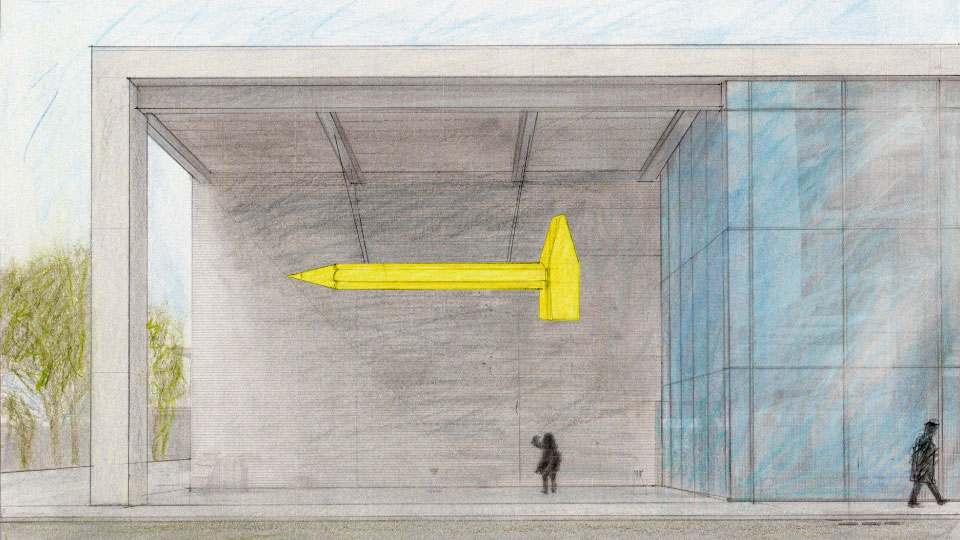
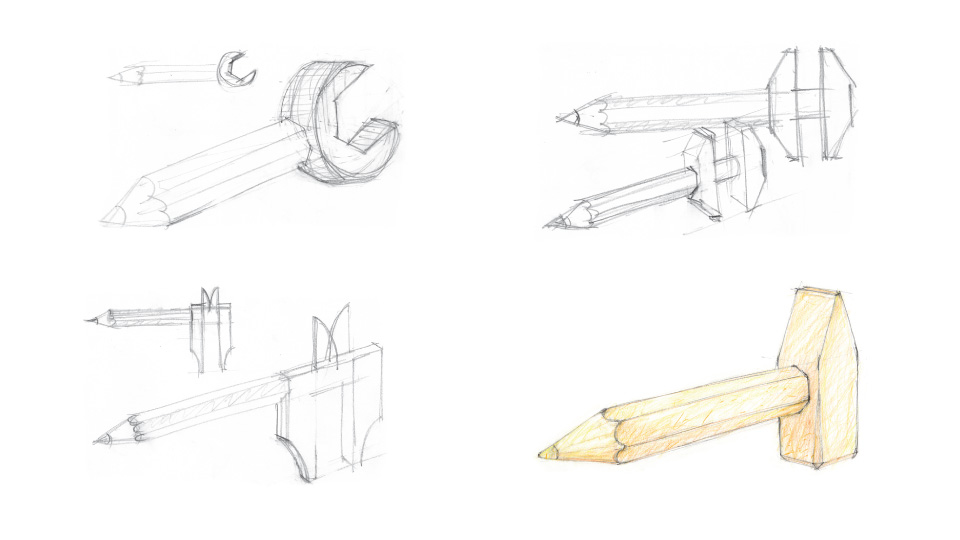
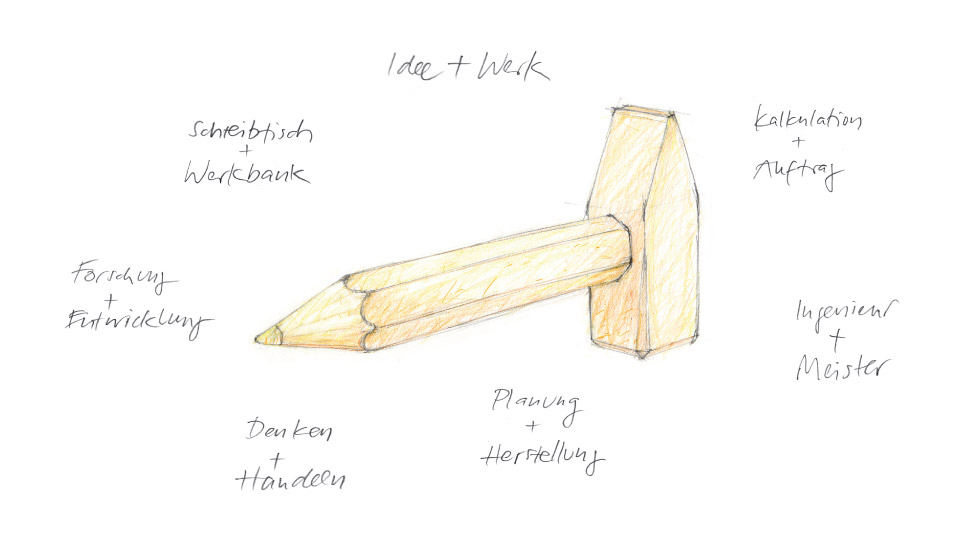
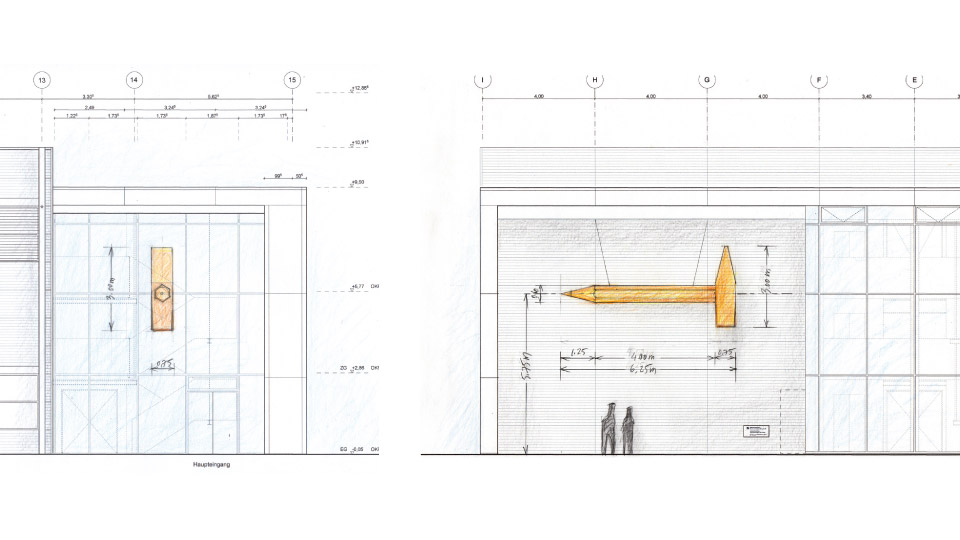
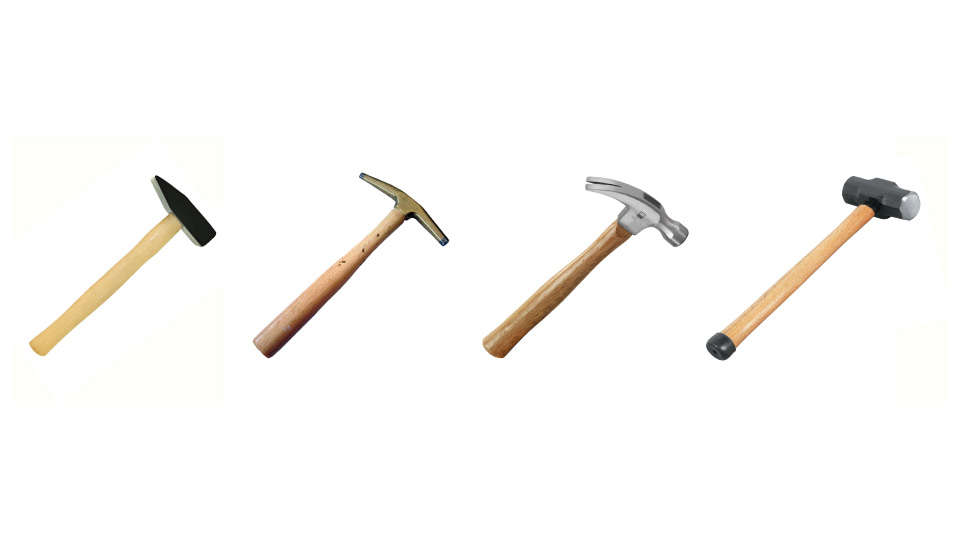
„Handwerk“ ist weit mehr als Etwas mit der Hand ins Werk zu setzen, auch wenn der Begriff dieses nahelegt!
Die Hand macht nur das, zu was der Kopf sie veranlasst. Genauso wie es ohne Übung keinen Meister gibt, so gibt es ohne Plan kein Werk. Aus dem Wechselspiel von Wissen und Planung, Fähigkeit und Fertigkeit lebt das Handwerk. So wurde die Welt, wie wir sie heute kennen, von Urzeiten her geformt.
Die Skulptur will den angehenden Gesellen und späteren Meistern die Macht des fundamentalen Wechselspiels von Kopf und Hand mit einem einprägsamen Zeichen begreifbar machen. Der Hammer, als vermutlich geschichtlich ältestes Werkzeug, dient als Symbol für die Vielfalt von Technik und für handwerkliches Können. Der Stift, mit dem auch noch im digitalen Zeitalter Ideen festgehalten und vermittelt werden, ist ein Symbol für Wissen, Planung, Ingenieurskunst und nicht zuletzt für kaufmännische Kalkulation.
Beide Seiten – Kopf und Hand – sind in dem Kunstwerk untrennbar miteinander verschmolzen. Technik, Können und Kraft (Hammer) sind nichts ohne einen Plan – Ideen (Stift) sind nichts ohne die Möglichkeit und Fähigkeit zur Umsetzung.
Bezogen auf die Ausbildungssituation in Lüneburg können die Schüler in der Kombination von Stift und Werkzeug auch ein Bild für die in Handwerk und Industrie wegweisende duale Ausbildung in Schule und Betrieb erkennen.
Die Symbolkraft der Skulptur könnte auch bei der Prämierung der besten Jahresabsolventen der Schule genutzt werden. Hierbei könnte die Skulptur als Erinnerung in verkleinerter Form aus poliertem Messing überreicht werden. Die Anfertigung dieser Auszeichnungen könnte in der Grundlehre Metallverarbeitung von Schülern als praktische Übung selbst erbracht werden.
Technische Umsetzung
Hammerform:
Der Hammer ist das älteste Werkzeug, das ursprünglich auf den Faustkeil zurückgeht. Es gibt eine faszinierende Vielfalt an Hammerformen, die sich historisch je nach Gebrauchszweck oder Herkunftsland in vielen Varianten entwickelt haben. In Deutschland am weitesten verbreitet ist der „klassische“ Schlosserhammer, wie er in der DIN 1041 aus dem Jahr 1927 festgehalten wurde. Diese Form dient als Vorlage für den Hammerkopf der Skulptur.
Konstruktion:
Um eine optimale Größe der Skulptur bei geringem Gewicht und guter Stabilität zu erreichen, wird das Objekt aus etwa 5mm starkem Aluminiumblech gefertigt. Bei der Herstellung kommen neueste Technologien wie Lasern, CNC-Fräsen und Präzisionskanten zum Einsatz – modernste maschinengestütze Techniken, wie sie auch im Werkstattgebäude unterrichtet werden. Die weitere Formgebung und der Zusammenbau erfordert für Treiben, Biegen, Schweißen und Polieren mit der dafür nötigen manuelle Geschicklichtkeit und Erfahrung weitere wichtige Handwerkstugenden.
Oberfläche:
Das Finish der Skulptur wird aus 24 Karat Plattgold ausgeführt. Die damit verbundene Wertigkeit symbolisiert Wirtschaftskraft und Handwerksstolz. Die Plattvergoldung erzeugt eine hohe Leuchtkraft mit großer Fernwirkung auch ohne künstliches Licht. Der Goldton nimmt das Gelb der Wandfarbe im Inneren des Gebäudes auf und bildet einen schönen und emotional aufgeladenen Kontrast zur technisch kühlen Farbgebung des Vorplatzes mit seinen grauen und metallischen Oberflächen. Die Blattvergoldung erfolgt auf traditionelle Weise in geduldiger Handarbeit und bildet so einen Gegenpol zur High-Tech-Produktion des Grundkörpers.
Aufhängung:
Die Skulptur hat ein Gesamtgewicht von ca. 200kg und wird an 4 Edelstahlseilen mittels Klemmen oder Bolzen von den zwei mittleren Stahlträgern der Unterkonstruktion des Vordach abgehängt, so dass pro Hängepunkt ca. 50 kg Last entstehen. Alle verwendeten Bauteile sind für hängende Lasten zugelassen.
//
„Craft“ is much more than putting something into action with the hand, even if the term suggests this!
The hand only does what the head makes it do. Just as there is no master without practice, there is no work without a plan. Craft lives from the interplay of knowledge and planning, ability and skill. This is how the world as we know it today was formed from time immemorial.
The sculpture wants to make the power of the fundamental interplay of head and hand comprehensible to the budding journeymen and later masters with a memorable sign.
The hammer, probably the oldest tool in history, serves as a symbol for the diversity of technology and for craftsmanship. The pen, which is still used to record and communicate ideas in the digital age, is a symbol of knowledge, planning, engineering and, last but not least, commercial calculation.
Both sides – head and hand – are inseparably fused in the work of art. Technology, skill and power (hammer) are nothing without a plan – ideas (pen) are nothing without the possibility and ability to implement them.
With reference to the training situation in Lüneburg, the pupils can also recognise in the combination of pen and tool an image for the dual training in school and company that is leading the way in craft and industry.
The sculpture’s symbolic power could also be used to award prizes to the school’s best annual graduates. Here, the sculpture could be presented as a memento in a scaled-down form made of polished brass. The students could make these awards themselves as a practical exercise in the basic metalworking course.
Technical realisation
Hammer shape:
The hammer is the oldest tool, originally dating back to the hand axe. There is a fascinating variety of hammer shapes, which have historically developed in many variants depending on the purpose of use or country of origin. In Germany, the most widespread is the „classic“ locksmith’s hammer as defined in DIN 1041 from 1927. This form serves as a template for the hammer head of the sculpture.
Construction:
In order to achieve an optimal size of the sculpture with low weight and good stability, the object is made of approximately 5mm thick aluminium sheet. The latest technologies such as lasering, CNC milling and precision edging are used in the production – state-of-the-art machine-based techniques, as they are also taught in the workshop building. Further shaping and assembly requires further important craftsmanship virtues for driving, bending, welding and polishing with the necessary manual dexterity and experience.
Finish:
The finish of the sculpture is made of 24 carat plated gold. The associated value symbolises economic power and pride in craftsmanship. The plate gold plating creates a high luminosity with great long-distance effect even without artificial light. The gold tone picks up the yellow of the wall colour inside the building and forms a beautiful and emotionally charged contrast to the technically cool colour scheme of the forecourt with its grey and metallic surfaces. The gold leafing is done in the traditional way, patiently by hand, providing a counterpoint to the high-tech production of the basic body.
Suspension:
The sculpture has a total weight of approx. 200kg and is suspended from 4 stainless steel cables by means of clamps or bolts from the two central steel beams of the canopy’s substructure, creating a load of approx. 50kg per suspension point. All components used are approved for suspended loads.
P R O P O S A L Competition Handwerkskammer in Lüneburg 2015 + D E S I G N aluminium / gold leaves / size 6.25 x 3.00 x0.75m / weight 200kg / surface 15sqm / volume 2,4 cbm + S U P P O R T / + M E D I A 5 images © Christoph Hildebrand + T A G S Proposal / Urban / +
